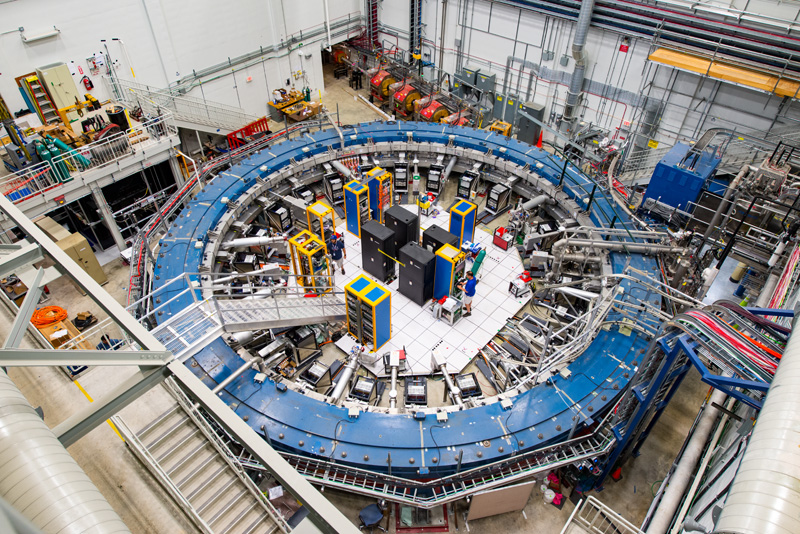Yawn, just another day at Fermilab. Discovering that the way we understand our universe is wrong. It’s a day that ends in “Y,” right?
Seriously though, this is a big deal.
Yesterday, Fermilab announced the preliminary results of 8.2 billion particle “races” around the Fermilab “track” which indicate that our understanding of how the universe works at the subatomic level is wrong.
The experiment focused on a fleeting subatomic particle called a “muon,” which is a larger cousin of the electron. Here’s the description from Fermliab’s press release (because we’re damned if we can explain it properly):
Muons occur naturally when cosmic rays strike Earth’s atmosphere, and particle accelerators at Fermilab can produce them in large numbers. Like electrons, muons act as if they have a tiny internal magnet. In a strong magnetic field, the direction of the muon’s magnet precesses, or wobbles, much like the axis of a spinning top or gyroscope. The strength of the internal magnet determines the rate that the muon precesses in an external magnetic field and is described by a number that physicists call the g-factor. This number can be calculated with ultra-high precision.
As the muons circulate in the Muon g-2 magnet, they also interact with a quantum foam of subatomic particles popping in and out of existence. Interactions with these short-lived particles affect the value of the g-factor, causing the muons’ precession to speed up or slow down very slightly. The Standard Model predicts this so-called anomalous magnetic moment extremely precisely. But if the quantum foam contains additional forces or particles not accounted for by the Standard Model, that would tweak the muon g-factor further.
“This quantity we measure reflects the interactions of the muon with everything else in the universe. But when the theorists calculate the same quantity, using all of the known forces and particles in the Standard Model, we don’t get the same answer,” said Renee Fatemi, a physicist at the University of Kentucky and the simulations manager for the Muon g-2 experiment. “This is strong evidence that the muon is sensitive to something that is not in our best theory.”
If we may take a shot at summarizing, the results of this experiment, if borne out by further analysis, prove that what is known as the Standard Model in physics is missing something. Given that the Standard Model is effectively the Bible of our understanding of the physical universe, that’s a pretty big deal.
Here‘s the full announcement.
Here’s an explanation of the experiment from one of the physicists involved. The physics of the experiment start at about 37:30 and a walk-through of the experiment site starts at 40:36. (You should really watch the whole thing if you’ve got the time. Fermilab is a world of wonders.)








